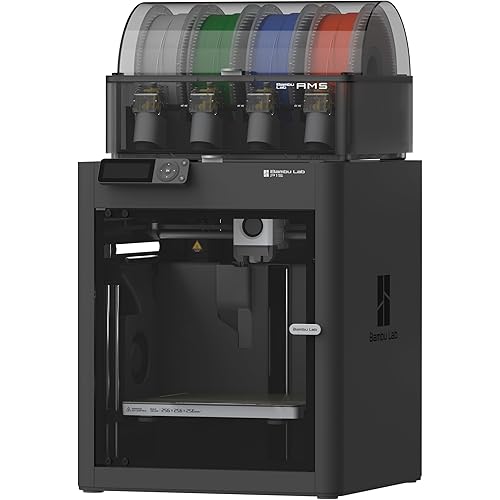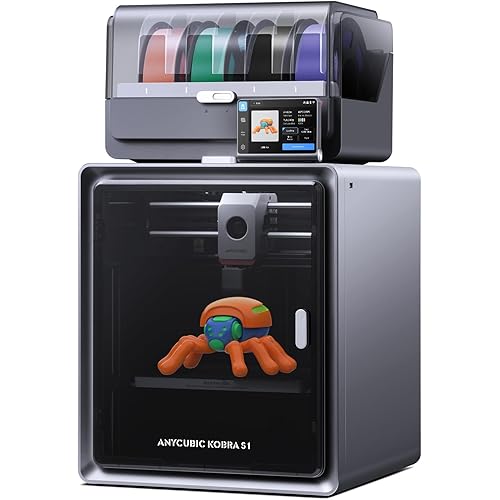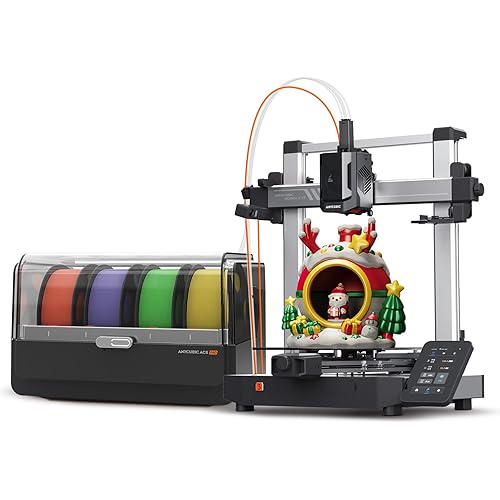FLASHFORGE Adventurer 5M Pro 3D Printer, 600mm/s High-Speed, FDM 3D Printer Auto Leveling with 280°C Quick Detachable Nozzle, Core XY Structure, Dual Filtration System, Print Size 220x220x220mm









Buy Now, Pay Later
- – Up to 36-month term if approved
- – No impact on credit
- – Instant approval decision
- – Secure and straightforward checkout
Ready to go? Add this product to your cart and select a plan during checkout.
Payment plans are offered through our trusted finance partners Klarna, Affirm, Afterpay, Apple Pay, and PayTomorrow. No-credit-needed leasing options through Acima may also be available at checkout.
Learn more about financing & leasing here.
Selected Option
FREE refund/replacement until Jan 31, 2026 Learn more
To qualify for a full refund, items must be returned in their original, unused condition. If an item is returned in a used, damaged, or materially different state, you may be granted a partial refund.
To initiate a return, please visit our Returns Center.
View our full returns policy here.
Recently Viewed
Color: Adventurer 5M Pro
Features
- High Performance Experience:Flashforge Adventurer 5M Pro 3D printer is designed for efficiency, boasting a maximum speed of 600mm/s and 20000mm/s2 Acceleration, which is 12x faster than most of fdm 3D printer on the market. Achieve impeccable print quality with a Core XY structure for intricate details without compromising on speed. Adventurer 5M Pros Printing noise < 50db, will provide a quiet working environment to users
- Experience Smart Convenience:No manual leveling, Adventurer 5M PRO 3D printer just need one-click printing, without complicated operation procedures. Filament runout sensor and filament tangle detection, ensuring each successful prints. Fully Enclosed 3D printer AD5MPRO equipped with a dual filtration system of internal and external, suitable for use in closed environments, effectively blocking 99% of particles and VOCs, thus protecting your respiratory system
- Get Great Model in Short Time:Max 280C Direct Extruder, 32mm3/s large flow hot end, heating to 200C just in 35s, to ensure that the consumables are fully melted during high-speed and high-temperature printing, built-in vibration compensation, eliminating ghosting in prints; this printer is equipped with a powerful nozzle fan and an auxiliary fan within the cavity to effectively cool printed models, preventing wire drawing and deformation with utmost efficiency
- More Function:1Remote Camera Monitoring - supports real-time monitoring and it adds convenience to your printing experience, offering seamless accessibility and control. 2Quick Detachable Nozzle - Various nozzle diameter (0.25/0.4/0.6/0.8mm) options suitable for both high-precision and high-efficiency mode. 3Automatic Shutdown after printing completed 4 Double-sided flexible PEI steel plate-easy to remove model. Multiple Plate Options: PEI/PC/PEI Coated 5 4.3-inch touchscreen interface for added convenience 6 Support PLA, ABS, PETG, ASA, TPU, PC, PLA-CF, and PETG-CF, etc
- Exceptional After-Sales Support:FLASHFORGE FDM 3d printers come with one-year warranty and lifetime technical support. If you have any question please free contact us, we will fast respond within 24 hours
Brand: FLASHFORGE
Material: PLA/ABS/PETG/ASA/TPU/PC/PLA-CF/PETG-CF
Color: Adventurer 5M Pro
Product Dimensions: 14.96"D x 15.74"W x 17.83"H
Item Weight: 14.6 Kilograms
Product Dimensions: 14.96 x 15.74 x 17.83 inches
Item Weight: 32.1 pounds
Item model number: AD5M PRO
Date First Available: December 8, 2023
Manufacturer: Zhejiang Flashforge 3D Technology Co., Ltd
Frequently asked questions
To initiate a return, please visit our Returns Center.
View our full returns policy here.
- Klarna Financing
- Affirm Pay in 4
- Affirm Financing
- Afterpay Financing
- PayTomorrow Financing
- Financing through Apple Pay
Learn more about financing & leasing here.
Similar Products
Top Amazon Reviews











![LimoStudio [Enhanced Super Duty] 20.1 x 10.4 ft. Double Dual Crossbar Backdrop Stands, Upgraded Heavy Duty & Thicker Pole, Strongest in Market, No Bend No Shake, 360° Rotatable Angle Control, AGG3353](https://m.media-amazon.com/images/I/61Mn8i2ZwvL._AC_US500_.jpg)















